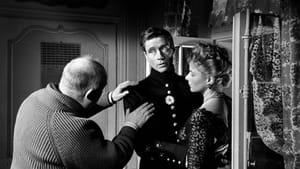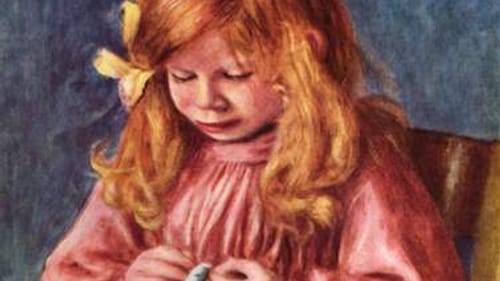Stay in the Loop
BSR publishes on a weekly schedule, with an email newsletter every Wednesday and Thursday morning. There’s no paywall, and subscribing is always free.
Moving pictures
Barnes Foundation presents 'Renoir: Father and Son/Painting and Cinema'

How do you follow an act like Pierre-Auguste Renoir? That is the question asked and answered by the Barnes Foundation’s Renoir: Father and Son/Painting and Cinema. The beautifully curated exhibition presents a dialogue between the great French Impressionist painter and his second son, Jean Renoir (1894-1979), considered the father of modern cinema.
Like father, like son
Freud would’ve loved the dynamic. When Jean was born, his father was already the leading painter of his day. Young Jean’s milieu included Matisse, Cézanne, Braque, Man Ray, and Cartier-Bresson. Jean’s nanny was his father’s favorite model, and Jean was often the subject of his father’s paintings.
Jean married one of his father’s models, Catherine Hessling. One of the exhibition highlights is a surrealistic, silent film clip by Jean Renoir featuring Hessling, adjacent to a compelling portrait of her by Fauvist painter André Derain.
Before transforming himself into the consummate hyphenate — screenwriter-actor-director-editor — Jean Renoir had a brief and mostly unsuccessful career as a ceramicist. His only collector was Albert Barnes, who at the time was also snatching up Auguste Renoir canvases.
Happy obsession
Jean didn’t find the leap to film jarring. “Ceramics and film are alike in that they both are the result of chance and accident,” he wrote in his 1974 memoir, My Life and My Films. Jean’s colorful ceramics are on display, but they pale in comparison to his film clips, which provide nothing short of the history of French film from the 1920s through the 1950s. His best-known films include The Grand Illusion and The Rules of the Game.

According to film curator Matthieu Orléan of Paris’s La Cinémathèque Française, Jean Renoir was “obsessed” with film. Influenced by the silent films of Charlie Chaplin, Jean’s productions were a “family affair,” an ensemble of friends and relatives, often shot in locations featured in his father’s paintings in the South of France.
The theme of Auguste Renoir’s light-dappled painting The Swing (1887), which has not been displayed on the East Coast since 1986, reappears in Jean’s films, most notably in A Day in the Country (1936). By today’s standards, there is nothing scandalous about young women in Victorian dress sitting on a swing; through Jean’s lens, the scene is filled with eroticism.
His attention to the play of light, composition of the frame, and use of color speaks directly to his father’s influence. Many of the characters in Jean’s films were lifted directly from his father’s paintings in the Barnes Collection. Although he stood in Auguste’s shadow in his youth, few directors cast a larger shadow than Jean Renoir, who was idolized by French New Wave filmmakers as well as Martin Scorsese, Ingmar Bergman, and Akira Kurosawa.
For film lovers (and even Auguste Renoir haters), this exhibition, featuring film clips, photos, costumes, and scene designs, is a treasure trove. When asked at the show’s opening which directors were influenced by Jean Renoir, Monsieur Orléan gave a Gallic shrug and answered, “Everyone.”
What, When, Where
Renoir: Father and Son/Painting and Cinema. Through September 3, 2018, at the Barnes Foundation, 2025 Benjamin Franklin Parkway, Philadelphia. (215) 278-7000 or barnesfoundation.org.
The Films of Jean Renoir. Through August 24, 2018, at the International House's Lightbox Cinema, 3701 Chestnut Street, Philadelphia. (215) 387-5125 or ihousephilly.org.
Sign up for our newsletter
All of the week's new articles, all in one place. Sign up for the free weekly BSR newsletters, and don't miss a conversation.

 Stacia Friedman
Stacia Friedman